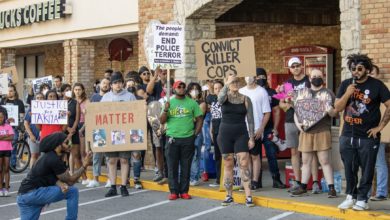Forty- two states currently have laws allowing minors to receive life sentences without parole.
There are at least 2,225 people serving life without parole in U.S. prisons for crimes committed before they were 18-
 |
In 26 states, life without parole is a mandatory sentence for committing first-degree murder. Ninety-three percent of youth offenders sentenced to life without parole are convicted of murder, but 26 percent are convicted of “felony murder.” This law makes any participant in a felony criminally responsible for deaths that occur during the crime. In other words, 26 percent of the young people who receive life without parole did not pull the trigger.
Nationwide, Black youth receive life without parole sentences at a rate estimated to be 10 times greater than that of white youth (6.6 versus 0.6). In California, Black youth are 22.5 times more likely to receive this sentence than white youth. In Pennsylvania, Hispanic youth are 10 times more likely to receive the sentence than whites.
At least 132 countries have rejected life without parole sentencing for youth. In the 13 countries outside of the United States that retain this harsh punishment, there are only about a dozen individuals serving the sentence.
Repression, not ‘rehabilitation’
Over 2.2 million people are in jails or prisons in the United States, and an additional 4.8 million are on probation or parole. Nearly 70 percent are men of color, almost all of them from working-class communities. The pretense of “rehabilitation” has been largely dropped from the prison system. In California, this word was simply deleted from the Corrections Department’s mission statement.
This trend is not simply a vestige from an earlier era. The tendency to lock up young people of color is one that the U.S. capitalist state constantly reinforces and intensifies.
For example, Rep. Adam Schiff (D, Calif.) is backing House Resolution 3547, a piece of “anti-gang” legislation. If passed, it would broaden the legal definition of “gang-related” activities and toughen the sentences meted out for such convictions. Among its most horrendous provisions, the bill would allow federal courts to sentence minors as young as 13-years-old to life in prison without parole. HR 3547 is just another expression of institutionalized violence against young people of color—another way to lock them up and throw away the key.
Take the case of the Jena 6: one of the Six, Mychal Bell, has been sentenced to 18 months for fighting with a white student. Four more are facing second-degree battery charges and another is facing juvenile charges.
It would have been far worse if a mass movement had not arisen to defend the Six. Bell had faced at least 22 years, and the others faced attempted murder charges.
Here in New York City, the ANSWER Coalition (Act Now to Stop War and End Racism) collected over 6,000 signatures demanding the charges be dropped and that the prosecutor of the Jena 6 case be fired. Activists from other organizations conducted similar campaigns across the country, collecting tens of thousands of signatures and holding protests to coincide with the Six’s court dates. ANSWER organized a national day of action to defend the Six, with protests in more than 13 cities on Nov. 7. Responding to the groundswell of pressure, on Dec. 24, the Congressional Black Caucus demanded that outgoing Louisiana Governor Kathleen Blanco pardon the Six. She refused.
Despite the many efforts to support the Jena 6, we cannot minimize the pressure that the racist system brought down on them. As part of his plea bargain, Bell reportedly has offered to testify against the other five, which we very much hope he does not do.
The prison system has been a tool for the ruling class to manage politically the high-tech revolution that began in the late 1970s. It has, on the one hand, forcibly pushed together the newly unemployed workforce, as well as the urban communities where jobs are scarce. On the other hand, it has provided the capitalists with a racist tool to terrorize the rest of the workforce against fomenting mass resistance.
But in the end, just like the socialization of production during capitalist development leads to working class unity and organization, the mass concentration in confinement of the most oppressed will lead to unity of purpose, tactics and training behind prison walls.
The Attica prison rebellion in 1971 showed the possibilities of what unity and organization can achieve behind prison walls. Malcolm X became a revolutionary in prison. Mumia Abu-Jamal works every day to bring revolutionary consciousness to all our brothers and sisters behind bars.
There are few crimes more glaring than what is being perpetrated against our class by the bosses and their penal system. The working class demands of solidarity and unity must extend to our whole class, inside and outside of the system.






